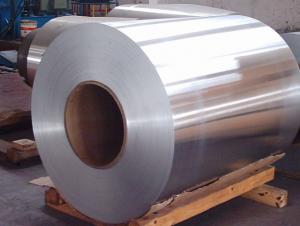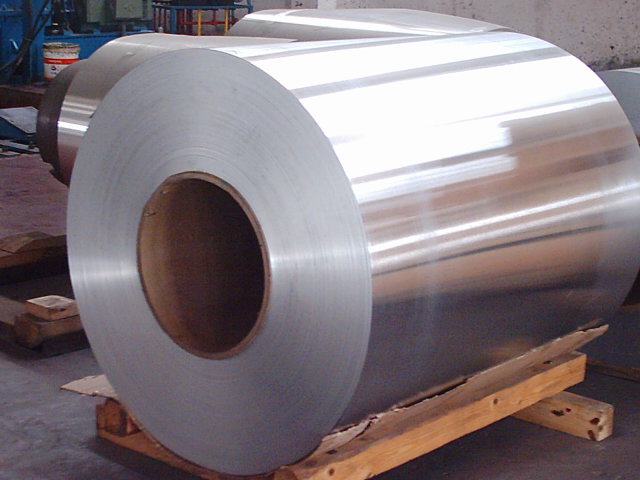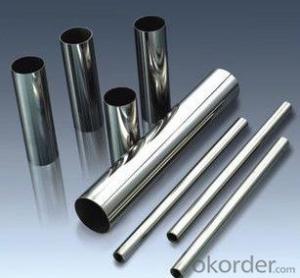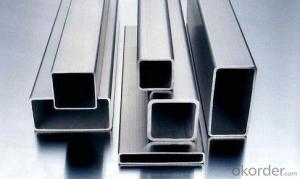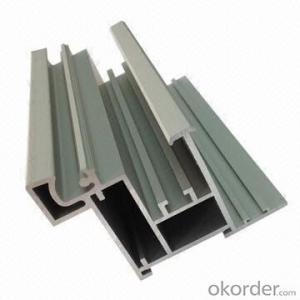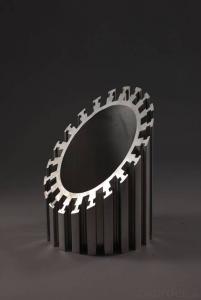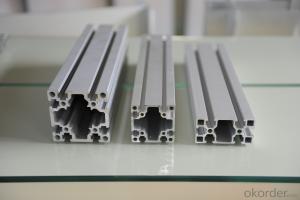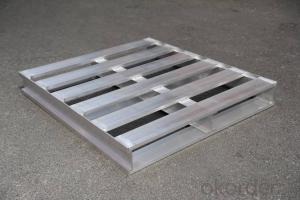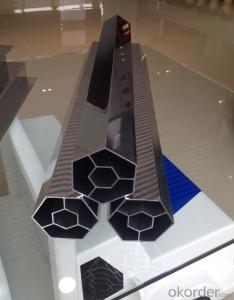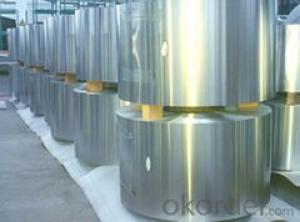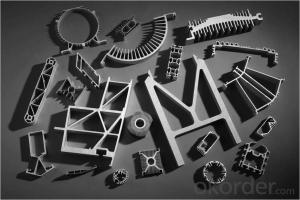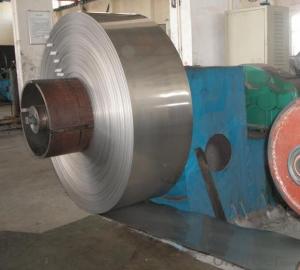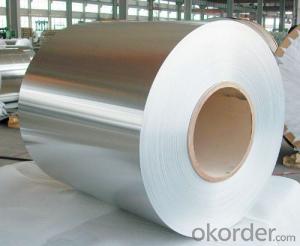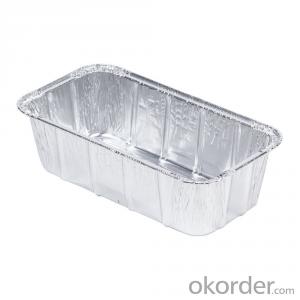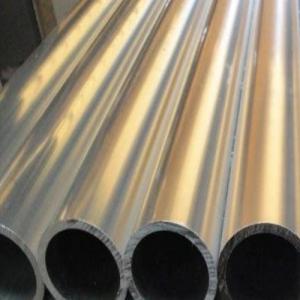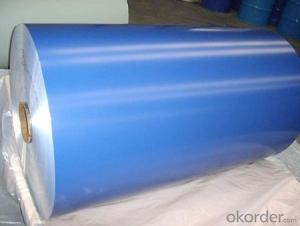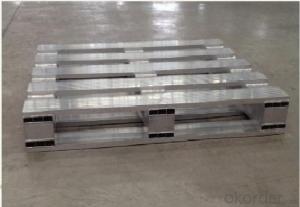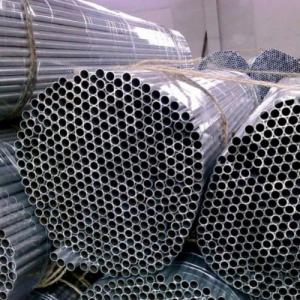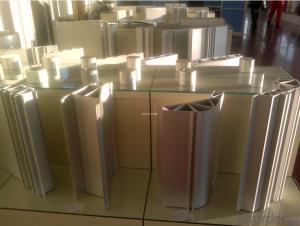Aluminum Pipes and Coils for Any Application
- Loading Port:
- China Main Port
- Payment Terms:
- TT OR LC
- Min Order Qty:
- -
- Supply Capability:
- -
OKorder Service Pledge
OKorder Financial Service
You Might Also Like
We provide a full range of precision aluminum for almost any application. We produce aluminum in a wide variety of alloys, including clad composites. Our aluminum can be produced in standard dimensions or custom made to your special requirements. We produce both imperial and metric units. We manufacture in compliance with the main international specifications, and tighter tolerances or custom tempers are available upon request. We offer various surface conditions, custom finishes (painting, anodizing, embossing), special processing, and multiple packaging options to meet our customer's unique requirements. The following is a summary of our capabilities.
Manufactured in compliance with the main international specifications and standards, including: Aluminum Association, ASTM, EN, and DIN.
We can also manufacture in compliance with other international standards including:ASME, SAE, AMS, AWS, FED, MIL, QQ, ISO, BS, AFNOR, JIS and GOST.
Manufactured in compliance with the main international specifications and standards.
Tighter tolerances are available upon request.
Aluminium (or aluminum; see spelling differences) is a chemical element in the boron group with symbol Al and atomic number 13. It is a silvery white, soft, ductile metal. Aluminium is the third most abundant element (after oxygen and silicon), and the most abundant metal in the Earth's crust. It makes up about 8% by weight of the Earth's solid surface. Aluminium metal is so chemically reactive that native specimens are rare and limited to extreme reducing environments. Instead, it is found combined in over 270 different minerals.The chief ore of aluminium is bauxite.
Aluminium is remarkable for the metal's low density and for its ability to resist corrosion due to the phenomenon of passivation. Structural components made from aluminium and its alloys are vital to the aerospace industry and are important in other areas of transportation and structural materials. The most useful compounds of aluminium, at least on a weight basis, are the oxides and sulfates.
Despite its prevalence in the environment, no known form of life uses aluminium salts metabolically. In keeping with its pervasiveness, aluminium is well tolerated by plants and animals. Owing to their prevalence, potential beneficial (or otherwise) biological roles of aluminium compounds are of continuing interest.
Aluminium alloys with a wide range of properties are used in engineering structures. Alloy systems are classified by a number system (ANSI) or by names indicating their main alloying constituents (DIN and ISO).
The strength and durability of aluminium alloys vary widely, not only as a result of the components of the specific alloy, but also as a result of heat treatments and manufacturing processes. A lack of knowledge of these aspects has from time to time led to improperly designed structures and gained aluminium a bad reputation.
One important structural limitation of aluminium alloys is their fatigue strength. Unlike steels, aluminium alloys have no well-defined fatigue limit, meaning that fatigue failure eventually occurs, under even very small cyclic loadings. This implies that engineers must assess these loads and design for a fixed life rather than an infinite life.
Another important property of aluminium alloys is their sensitivity to heat. Workshop procedures involving heating are complicated by the fact that aluminium, unlike steel, melts without first glowing red. Forming operations where a blow torch is used therefore require some expertise, since no visual signs reveal how close the material is to melting. Aluminium alloys, like all structural alloys, also are subject to internal stresses following heating operations such as welding and casting. The problem with aluminium alloys in this regard is their low melting point, which make them more susceptible to distortions from thermally induced stress relief. Controlled stress relief can be done during manufacturing by heat-treating the parts in an oven, followed by gradual cooling—in effect annealing the stresses.
The low melting point of aluminium alloys has not precluded their use in rocketry; even for use in constructing combustion chambers where gases can reach 3500 K. The Agena upper stage engine used a regeneratively cooled aluminium design for some parts of the nozzle, including the thermally critical throat region.
Another alloy of some value is aluminium bronze (Cu-Al alloy).
- Q: Can 304 stainless steel aluminum pipe be welded with 6061?
- 304 stainless steel tube 6061 aluminum tubes, dissimilar metal welding.Method for welding friction welding, stainless steel tubes are respectively fixed on the friction welding of two fixed chuck open welder for rotation, two workpiece contact surface friction heat, through the pressurizing the two dissimilar metal contact oxidation layer is damaged, is to continue to operate a two joint welding effect metal.
- Q: Is the tube of LED lamp all plastic tube well or half plastic half aluminium tube?
- All plastic tube is one of the most widely used early, because the main use of non isolated power supply, in order to avoid electric shock problems, so I hope to use more plastic tube. Which is used with Phi 5 straw hat tube LED. The fluorescent lamp is the biggest problem due to the heat radiating, all sealed in the tube, unable to escape, life is very serious, coupled with the straw tube had life is very short, less than 2000 hours on the bad.Semi plastic half aluminum LED fluorescent lamps sold on the market are basically the half PC Aluminum Alloy, in the half light of the use of plastic in need not pervious to light and need the half cooling on the use of Aluminum Alloy.
- Q: Can aluminum pipes withstand high wind loads?
- Yes, aluminum pipes can withstand high wind loads. Aluminum is a lightweight and strong material that offers excellent structural integrity and durability, making it suitable for withstanding high wind forces.
- Q: How do I remove the aluminum from the PPR steady state aluminum tube?
- Hello, PPR steady pipe has a special tool called stripper. It is specially used to remove the aluminum layer on the steady pipe. I hope I can help my friend
- Q: We use CNC machining, the best easy to process, the hardness is too low, not good (listen to others say that some aluminum foam will stick to the knife, and some processing is not bright). Online check is said 6063, but to the aluminum shop asked about, say is 6061, buy 50 kilograms first, try to do, but the boss said seems to be another kind, beg you prawns help ah
- 5, as for aluminum rods or aluminum tubes, it depends on your quantity, quantity, or aluminum bar. Because aluminum is mostly seamed tube (not more seamless market), (the total cost of seamed tube lower) sometimes processed can see the seam line, unless you request is not high.
- Q: What are the disadvantages of using aluminum pipes?
- Using aluminum pipes in various applications has several disadvantages. Firstly, their strength and durability are lower compared to materials like steel, making them unsuitable for high-pressure or heavy load applications. The pipes may bend or deform, compromising their functionality. Secondly, aluminum is more prone to corrosion than materials like stainless steel. This is a significant drawback in environments with high humidity, acidic or alkaline conditions, or exposure to certain chemicals. Corrosion can cause leaks or failures in the pipes, potentially damaging the system or infrastructure. Additionally, aluminum pipes have a higher coefficient of thermal expansion than steel. This means they are more likely to expand or contract with temperature changes. This can cause problems in applications requiring precise dimensions or tight fittings, as the pipes may not maintain their original shape or size. Moreover, aluminum pipes are relatively more expensive compared to materials such as PVC or copper. This can be a disadvantage for projects with budget constraints, as the cost of aluminum pipes significantly impacts overall expenses. Lastly, aluminum is a good conductor of heat and electricity. While advantageous in some applications, it can be a disadvantage in others. For instance, in applications involving refrigeration or insulation, aluminum pipes can lead to heat transfer or energy loss, making them less efficient than materials with better insulation properties. In conclusion, the disadvantages of aluminum pipes include lower strength and durability, susceptibility to corrosion, higher coefficient of thermal expansion, higher cost, and potential heat or energy transfer issues. It is crucial to carefully consider these drawbacks in relation to the specific requirements of the application before selecting aluminum pipes as the preferred material.
- Q: Is the Ronshen refrigerator made of brass tubes or made of aluminium tubes?!
- The Ronshen refrigerator is made of aluminium tubes.Aluminum tube is a kind of nonferrous metal pipe, which is made of pure aluminum or aluminum alloy and is extruded into a hollow metal tube with longitudinal length.Advantages of aluminum pipe:First, welding technology advantages.Two is the service life advantage.Three is energy-saving advantages, insulation effect is better, the more power saving.Four is excellent bending performance, easy to install.
- Q: Are aluminum pipes suitable for architectural purposes?
- Yes, aluminum pipes are highly suitable for architectural purposes. Aluminum is a versatile and lightweight material that offers numerous advantages for architectural applications. Firstly, aluminum pipes have excellent corrosion resistance, making them ideal for outdoor structures that are exposed to varying weather conditions. They are resistant to rust and other forms of degradation, ensuring durability and longevity of the architectural design. Secondly, aluminum pipes can be easily fabricated and customized to meet specific architectural requirements. The material can be easily shaped, welded, and joined, allowing for the creation of intricate and complex designs. This flexibility enables architects to explore creative possibilities and achieve unique architectural aesthetics. Additionally, aluminum pipes have a high strength-to-weight ratio, meaning they are strong and sturdy while remaining lightweight. This makes them easier to transport, install, and maintain. The lightweight nature of aluminum also reduces the load on the overall structure, resulting in cost savings in construction materials. Moreover, aluminum pipes are recyclable, making them an environmentally friendly choice for architectural purposes. The material can be recycled repeatedly without losing its properties, reducing waste and minimizing the environmental impact of construction projects. Lastly, aluminum pipes offer a wide range of finishes and colors, allowing architects to achieve the desired appearance and aesthetic appeal. They can be anodized or coated, providing additional protection against corrosion and enhancing the overall visual appeal of the architectural design. In conclusion, aluminum pipes are highly suitable for architectural purposes due to their corrosion resistance, versatility, strength, lightweight nature, recyclability, and aesthetic options. These qualities make aluminum pipes an excellent choice for a wide range of architectural applications, from structural support to decorative elements.
- Q: 1100 what's the match between the aluminum material and the material? Thank you
- The deformed aluminum alloy in China can be divided into 1~9 system and 1 Series (1xxxx Series) according to the difference of the main elements, and the 6 Series (6xxxx Series) is AL-Mg-Si alloy, such as 1100 and 6063.
- Q: Are aluminum pipes suitable for industrial applications?
- Aluminum pipes prove to be a fitting choice for various industrial applications. They present a multitude of advantages that render them an exceptional option for different industrial environments. Firstly, the lightweight nature of aluminum facilitates easy handling and transportation, thereby enhancing the convenience of installation and maintenance. Moreover, aluminum pipes boast exceptional resistance to corrosion, making them ideal for scenarios where exposure to moisture or chemicals is a concern. Additionally, aluminum pipes exhibit commendable thermal conductivity, ensuring efficient heat transfer, and making them a suitable choice for temperature control-dependent applications. Lastly, their remarkable durability and prolonged lifespan minimize the need for frequent replacements. Consequently, the distinctive characteristics of aluminum pipes establish them as a reliable and cost-effective solution for industrial applications.
Send your message to us
Aluminum Pipes and Coils for Any Application
- Loading Port:
- China Main Port
- Payment Terms:
- TT OR LC
- Min Order Qty:
- -
- Supply Capability:
- -
OKorder Service Pledge
OKorder Financial Service
Similar products
Hot products
Hot Searches
Related keywords
